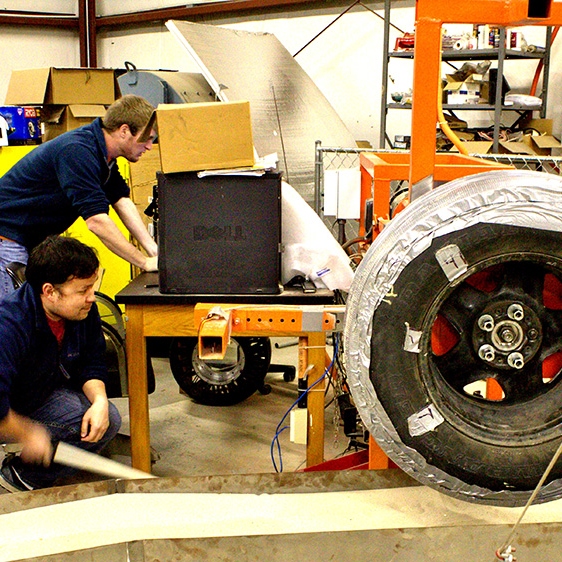Creating a Lasting Impression
Walking around campus, it is not hard to find public art that has been implemented into a number of sites throughout the years.
In Fall 2012, Art department faculty members Joey Manson, David Detrich and Denise Woodward-Detrich began Atelier InSite, a Creative Inquiry project that implements public artwork on the Clemson’s campus. It capitalizes on a cross-disciplinary and inclusive approach that is predominantly student driven. The goal is to create a new paradigm for the administration of public art on university campuses.
Manson believes Atelier InSite is helping to gain more student involvement and initiate awareness about not only what kind of art should be implemented on campus, but also why.
“There’s some public art on campus already, but it wasn’t as inclusive with student outreach,” Manson said. “This mechanism is much different. It’s a different model. We study the various ways public art works in universities across the country—how art works, how it functions and how it also fails.”
So how can art fail?
“Well public art’s role is to raise questions and prompt discussion,” Manson said. “We’re not about adorning a building; we’re about creating dialogue that can happen here on campus.”
To ensure no art sits in silence and potentially falls unnoticed, Atelier InSite’s team of 14 Creative Inquiry students, in ten different majors, spent hours perusing 218 portfolio submissions from around the world and narrowed them down to three finalists they felt best represented the Life Sciences Facility and surrounding areas. Proposals were requested from these finalists, and ultimately the commission was awarded with input from faculty, staff, and students working in the facility.
Atelier InSite’s latest project was installed in the atrium of the new Life Sciences Facility—a piece by San Francisco artist Klari Reis, whose 600 individual paintings are embedded in petri dishes of varying sizes.
The students are currently working on implementing art into the Watt Family Innovation Center as well as into the Lee III Expansion.
Sophomore visual arts major Rebekah Warren believes that her contribution to the project has taught her a lot about the art on campus and people’s various perceptions of it.
“It gives me pride that we’re able to decide these things,” she said. “Public artwork is something that evokes thought and isn’t always aesthetically proven but the main purpose is to make the viewer wonder.”
And it’s not just for art students either. Kep Pate, a senior visual arts major, is happy to see Clemson—a fundamentally science-driven university—more actively seeking to keep art alive and present in response to a policy set by the academic council that requires a 0.5% budget towards public art in new construction by Clemson University.
“It’s another cool way to show how the concentrations on campus can connect with one another. This is one of the only classes where you see architecture majors, art majors, life science majors and engineers all collaboratively working together,” Pate said. “Clemson tries to do that in a lot of ways, and this is another example of how we work together.”
Brittany Lamont, a senior health sciences major, says the experience has completely altered her perspective and has led her to earn a minor in art.
“I’ve been doing this CI for a year and half, and there’s something to be said about actually working with your hands and doing something as opposed to sitting in front of a projector watching your professor tell you how it is and how it goes and to just take his word for it,” she said. “It’s really valuable because instead it tells you how something works first-hand.”
Overall, the Creative Inquiry has created a lasting impression on both the students involved and the Clemson community.
“I hope to be able to come back one day if my kids are here and be able to say that I took part in this,” sophomore visual arts major Jessi Helmrich said.
“All the students enrolled are supporters of the arts,” Manson said. “They have that passion and drive and this enables them to leave a lasting contribution to the campus. Any of those graduating know they will have an impact for a long time to come.”



